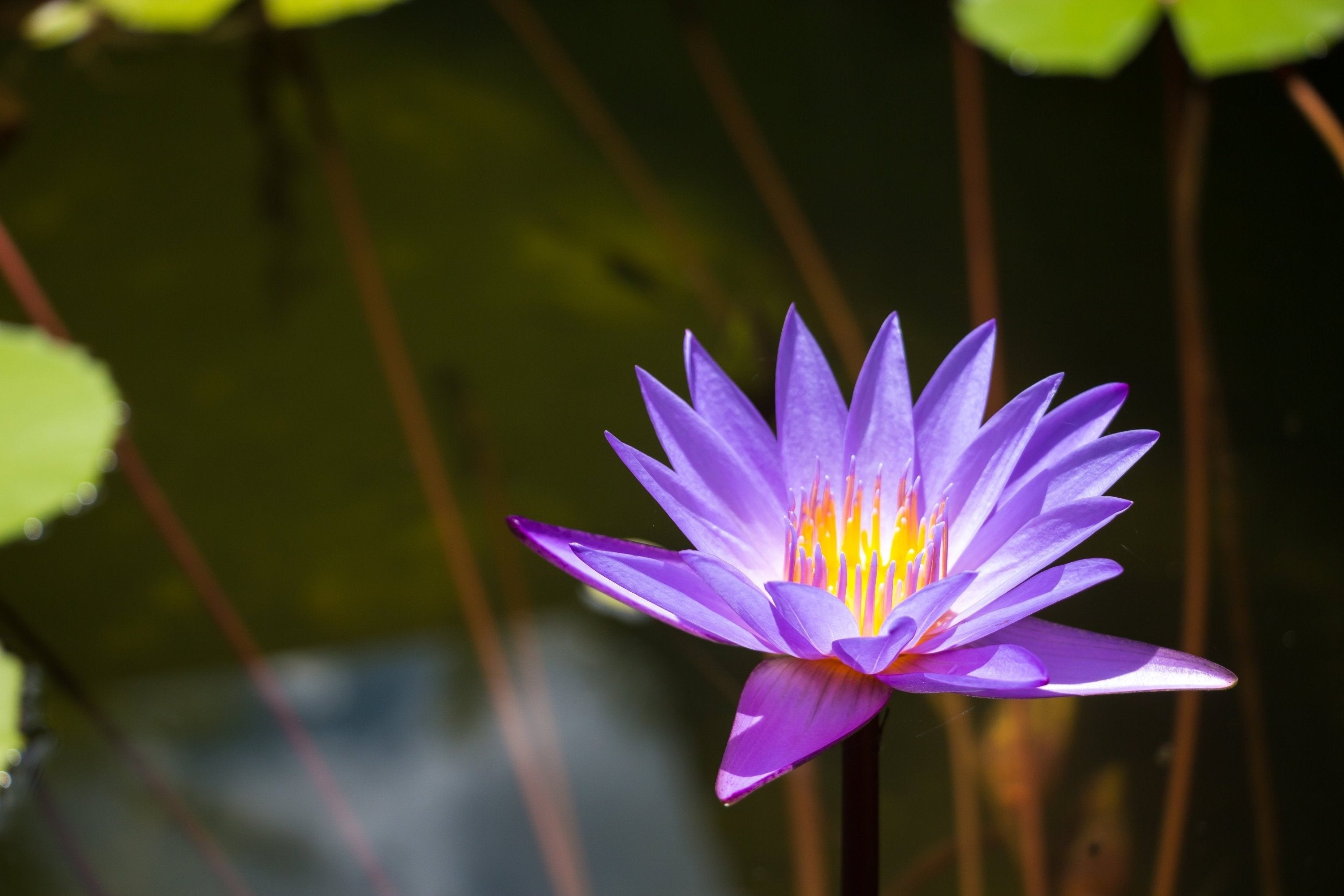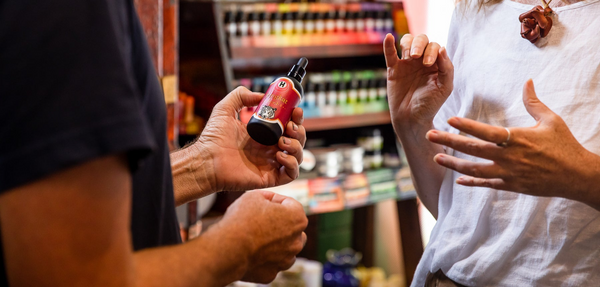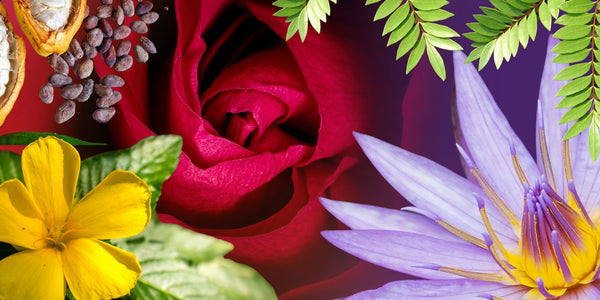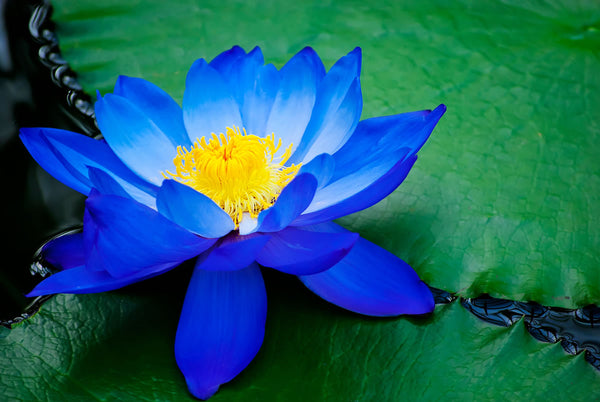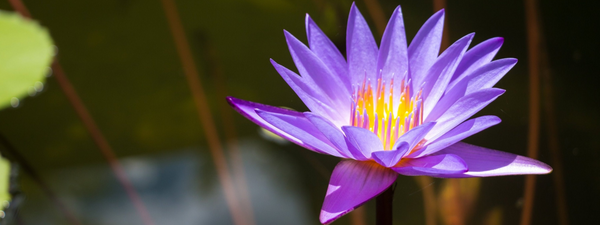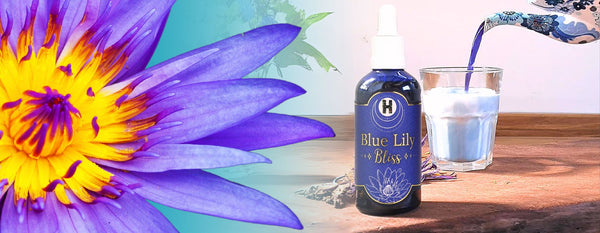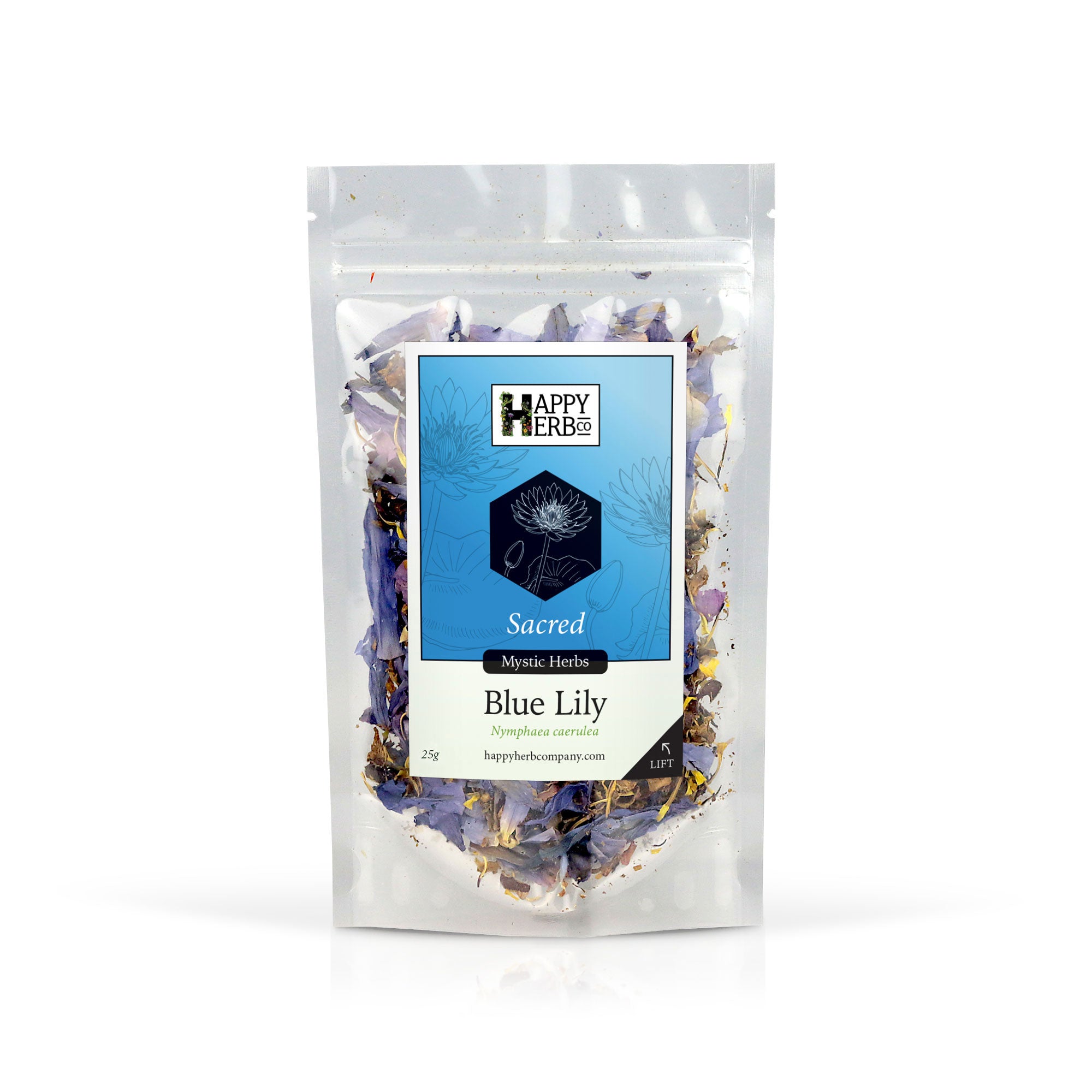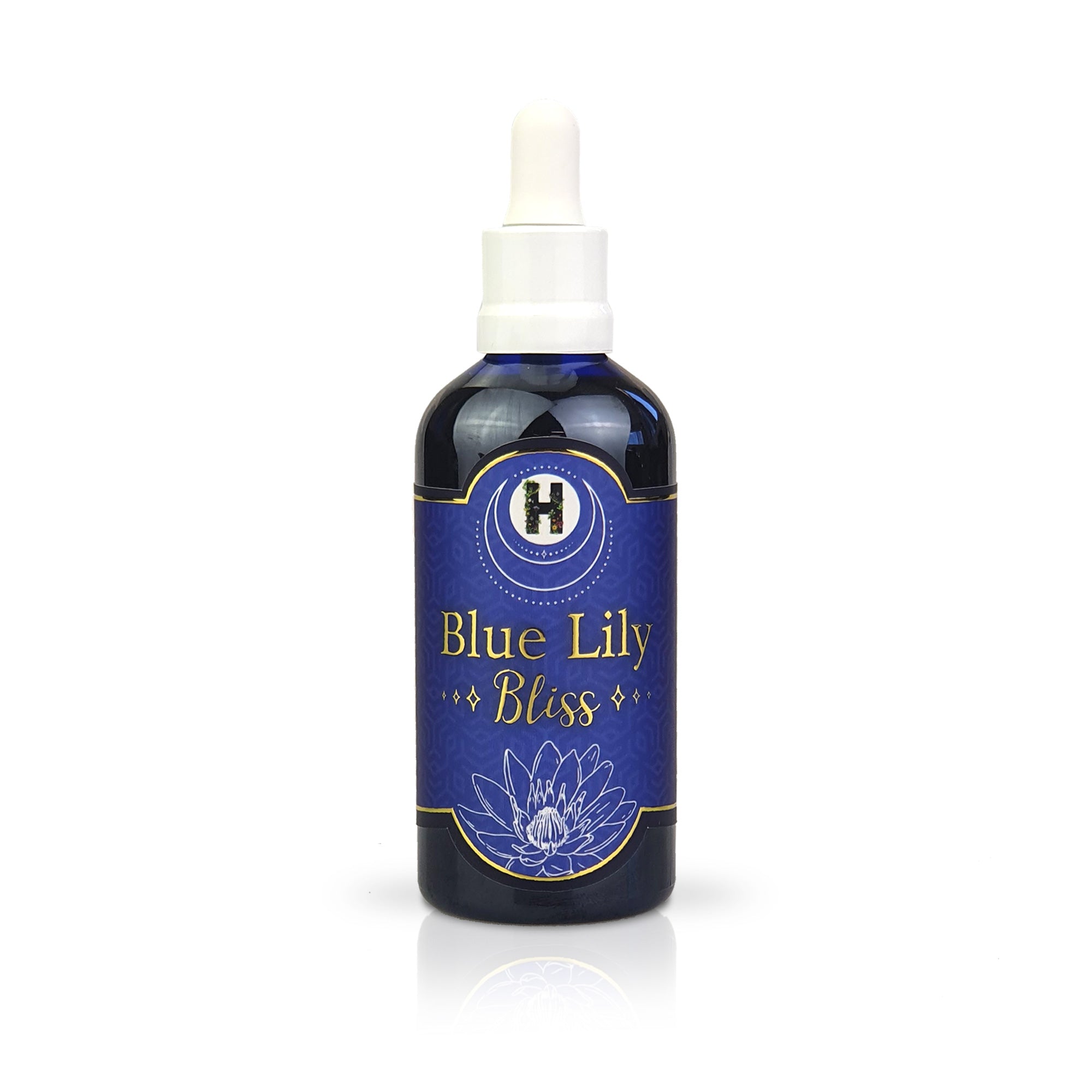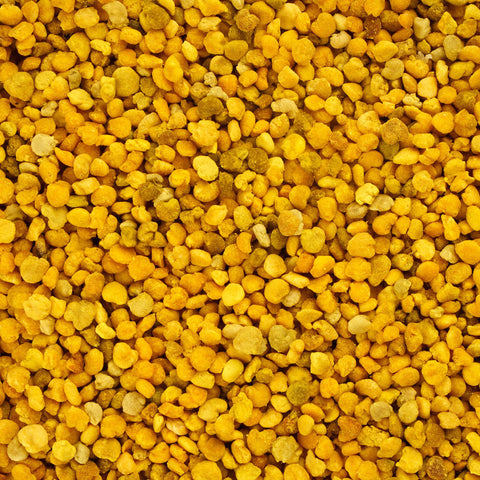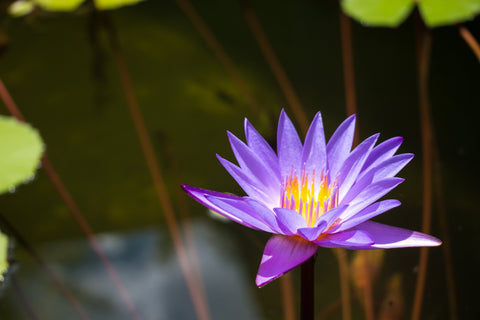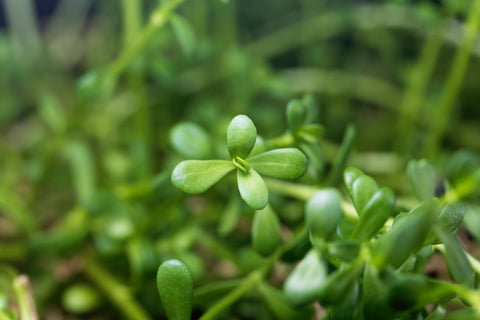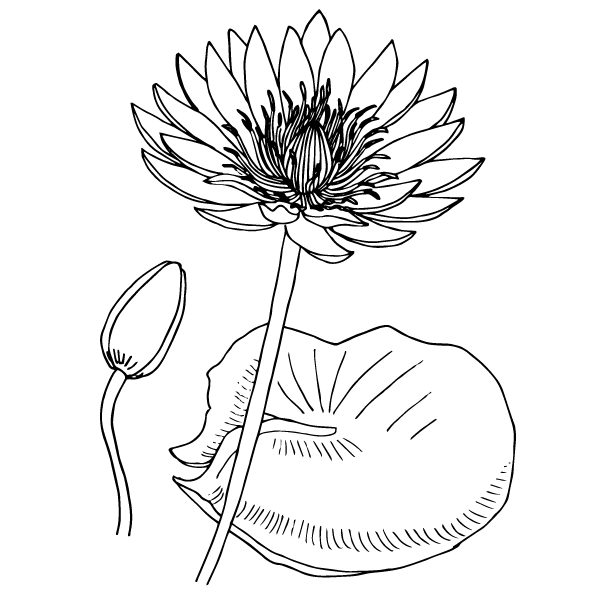
Botanical Name
Nymphaea caerulea
Also known as Blue Lotus, and Egyptian Lotus.
Blue Lily, also known as Blue Lotus or the Sacred Lily of the Nile, has been revered since ancient Egyptian times as a symbol of life, renewal, and spiritual awakening.
Learn about Blue Lily
Blue Lily, also known as Blue Lotus or the Sacred Lily of the Nile, has been revered since ancient Egyptian times as a symbol of life, renewal, and spiritual awakening. Thriving in the wetlands of the Nile delta, it was treasured for its beauty, divine fragrance, and ability to rise from murky waters—embodying rebirth and enlightened consciousness.
Depicted on the walls of tombs and temples, and recorded in ancient papyri, Blue Lily held a sacred role in ritual, medicine, and mythology. It appears in the Egyptian Book of the Dead as a symbol of spiritual reawakening, associated with the soul’s journey and the light of Ra.
Ancient physicians prescribed it for liver health, urinary regulation, and digestive complaints, and it was valued for its calming, analgesic, and anti-inflammatory effects.
Modern studies reveal that Blue Lily contains a rich array of bioactive compounds, including alkaloids (notably aporphine and nuciferine), flavonoids, and terpenes. These contribute to its relaxing, pain-relieving, and mildly psychoactive effects. Aporphine, a dopamine agonist, influences mood, motor control, and arousal—supporting its use in modern medicine for conditions like erectile dysfunction, Parkinson’s, Alzheimer’s, and addiction. Nuciferine is thought to act as an antipsychotic, inducing feelings of calm through mechanisms not yet fully understood, and has also shown promise in improving symptoms of erectile dysfunction.
Traditionally and anecdotally, Blue Lily is used to ease anxiety, promote deep sleep, enhance mood, stimulate libido, and encourage a euphoric, meditative state. Its entheogenic qualities—gentle and dreamlike—are thought to enhance consciousness without overwhelming the senses.
Paul Stamets describes its effect as “waking up your receptors… an alertness phenomenon” that invites presence rather than stimulation.
The flowers also produce an exquisite essential oil that is reported to have sensual and aphrodisiac properties.
Frequently Asked Questions
Are there any side effects or risks of taking Blue Lily?
Are there any side effects or risks of taking Blue Lily?
It’s generally considered safe in moderate amounts. Possible side effects include dizziness, nausea, or drowsiness, especially when taken with alcohol or sedatives. Avoid during pregnancy or while driving.
Can Blue Lily enhance dreams or be used for lucid dreaming?
Can Blue Lily enhance dreams or be used for lucid dreaming?
Many users report enhanced dream recall, vivid imagery, and even lucid dreams when using Blue Lotus before sleep. It's often combined with other dream-enhancing herbs such as Mugwort, Calea or African Dream Herb for this purpose.
Does Blue Lily make you high?
Does Blue Lily make you high?
It can induce a mild, dreamy state or gentle euphoria, but it’s not hallucinogenic or strongly intoxicating. The effects are subtle and more relaxing than psychedelic.
How is Blue Lily consumed?
How is Blue Lily consumed?
Common methods include:
- Tea: Steep dried petals in hot water
- Tincture or extract: Alcohol-based for stronger effects
- Smoking or vaping: Often mixed with other herbs
- Soaking in wine: A traditional Egyptian method
Is Blue Lotus the same as Blue Lily?
Is Blue Lotus the same as Blue Lily?
Yes. The terms are used interchangeably for Nymphaea caerulea.
Check out our blog Lotus or Lily for more info.
Should I take Blue Lily as a tincture, tea or smoke?
Should I take Blue Lily as a tincture, tea or smoke?
It partly depends on your preference! All methods offer similar dreamy, relaxing, euphoric effects.
If you are a smoker, Blue Lily is a great alternative to tobacco or cannabis. If you are a tea drinker, Blue Lily makes a beautiful addition to tea blends or drunk on its own. If you want the most potent and convenient product we recommend Blue Lily as a tincture, spagyric or resin. This is because some of the alkaloids in Blue Lily are best extracted in alcohol, and also because you can extract a larger volume of herb into a smaller volume. For example - our Blue Lily Resin is 100x strength (meaning there is 100g of Blue Lily in 1g of resin.), and can be swallowed, dissolved in hot water, or smoked. Our Blue Lily Bliss tincture is 1 :2 strength, meaning there is 50g of Blue Lily extracted in every 100ml bottle. The alcohol content of tinctures also helps your body to absorb the plant alkaloids more quickly. Tinctures, spagyrics and resins are also very convenient to use on the go.
What are the best herbal alcohol replacements?
What are the best herbal alcohol replacements?
Here are some of the best herbal alcohol alternatives that offer mood-enhancing, calming, or euphoric effects without the hangover:
- Kava – Deeply relaxing and mildly euphoric; great for social anxiety and unwinding.
- Damiana – Uplifting, heart-opening, and slightly aphrodisiac; perfect for connection and joy.
- Blue Lily – Dreamy, calming, and subtly euphoric; ideal for ceremonies or slow, soulful evenings.
- Kanna - Uplifts mood, and promotes relaxation without sedation or intoxication.
- Lemon Balm – Calming and mood-brightening; gentle enough for daytime.
- Passionflower – Helps with social nerves and overstimulation; grounding and relaxing.
- California Poppy - gentle relaxation and mood support without sedation.
- Hops - gentle calming and mild sedation without intoxication.
What are the spiritual or ceremonial uses of Blue Lily?
What are the spiritual or ceremonial uses of Blue Lily?
In ancient Egypt, it symbolized rebirth and divine connection. It was used in rituals, offerings, and possibly as a sacrament to induce altered states for spiritual insight.
To read more on this - check out our blog Blue Lily: Sacred Blue Lotus of the Nile
What is Blue Lotus / Blue Lily?
What is Blue Lotus / Blue Lily?
Blue Lotus (Nymphaea caerulea) is a water lily native to Egypt and parts of Asia. It was revered in ancient Egyptian culture for its spiritual and medicinal qualities and is known for its mildly psychoactive, calming, and euphoric effects.
Which herbs should I use for sleep?
Which herbs should I use for sleep?
We have many herbs for sleep that work great on their own or in a blend. The blended teas we offer are gentle and useful when you don't know which is the exact herb to use, but if you want to learn more about the different actions of each sleep herb that would suit your condition, then we can guide you through that.
Below is a quick reference for you, or view the herb profile for further information and FAQs.
Ashwagandha - Promotes sound sleep, regular use not a quick fix.
Passionflower - Sedation and relaxing the nervous system.
Valerian - Sedation, relaxing.
Mulungu - Our most powerful sedating herb, may lead to next day drowsiness.
Skullcap - When you have a busy mind.
California Poppy - Always useful for sleep, especially when pain is the issue.
Hops - Restlessness and anxiety.
Wild Lettuce - Sedating and pain relieving.
Lemon Balm - When low mood is causing sleeplessness.
Blue Lily - Dreamy, relaxing.
Kava - Relaxing and sedating. (Particularly our Borogoru strain)
Chamomile - Gentle relaxant before bed. Soothing and nice.
Lavender - Gentle relaxant before bed. Fragrant and nice.
What's the difference between the Blue Lily Bliss, Blue Lily 1:4 Tincture & Blue Lily Spagyric?
What's the difference between the Blue Lily Bliss, Blue Lily 1:4 Tincture & Blue Lily Spagyric?
Our Blue Lily Bliss tincture is 1:2 strength, which is twice as potent as our Blue Lily 1:4 Tincture. Blue Lily Bliss is also infused with Butterfly Pea, Sweet Orange oil, Rose Oil and Vanilla, to enhance the flavour. Both tinctures are extracted using cold-drip percolation, with a minimal alcohol base.
The Blue Lily Spagyric is the most concentrated, as you only need a few drops at a time. Spagyrics use alchemical and advanced laboratory processes that maintain the integrity of the essential oils, tincture mineral salts, as well as the vital essence. Read more about Spagyrics here.
All three liquid extracts can be used in similar ways, just at different dosages. They are all excellent for enhancing relaxation, bliss, joy, introspection, meditation, sleep and dreaming. We recommend any of these liquid extracts over teas, as Blue Lily contains alkaloids which are difficult to extract in water. They are also more convenient than tea.
What's the difference between the Blue Lily Resin & Blue Lily 20x Extract?
What's the difference between the Blue Lily Resin & Blue Lily 20x Extract?
Our Blue Lily Resin is 100x strength, which is 5 times stronger than the Blue Lily 20x Extract! They can both be used in the same way - rolled into small balls and swallowed, dissolved in hot water or herbal tea, smoked in a pipe or rolled with other herbs.
When should I use Blue Lily for sleep?
When should I use Blue Lily for sleep?
This sacred lily from ancient Egypt is often used to improve mood, relax the mind and body and sometimes as an aphrodisiac. Many of our customers find its dreamy energy helps them unwind, quiet their overactive minds and drop off into restful slumber.
Common Uses
Alcohol Replacement, Anxiety, Aphrodisiac, Harm Reduction from Cannabis, Harm Reduction from Opiates/Alcohol, Libido, Mood Enhancement, Nervous System, Nicotine & Drug Withdrawal, Relaxation, Restlessness, Sexual Anxiety, Socialising, Tension, Tobacco Alternatives, Sleep, Spiritual Journeying, Erectile Dysfunction, Alcohol & Drug Recovery, and Dreams.Herbal Actions
Nervine, Sedative, Anodyne, Anti-Inflammatory, Aphrodisiac, and Anxiolytic (Anti-Anxiety).Recipes
Got a recipe? Submit it here for a chance to be featured on our blog.
Precautions
Some reports of muscle tremors & nausea. Do not take with Benzodiazepine or other sedative medications as Blue Lily may increase their effects. Lilies may lower blood sugar levels in some people. Watch for signs of low blood sugar (hypoglycaemia) and monitor your blood sugar carefully if you have diabetes. May interfere with blood sugar control during and after surgical procedures. Stop using lotus at least 2 weeks before a scheduled surgery.
References
References
Robbins, LW (1998). The Encyclopedia of Witchcraft and Demonology. Crown Publishing Group.
Rätsch, C 2005, The Encyclopedia of Psychoactive Plants: Ethnopharmacology and its applications, Park Street Press.
Emoboden, K 1978, Nymphaea and Nelumbo in Roman times and earlier, University of California Press.
Bertol, E et al. 2022, 'Psychoactive properties of Blue Lily (Nymphaea caerulea): A comprehensive review', Journal of Ethnopharmacology, vol. 295, no. 112822.
Bertol E, Fineschi V, Karch SB, Mari F, Riezzo I. Nymphaea cults in ancient Egypt and the New World: a lesson in empirical pharmacology. J R Soc Med. 2004 Feb;97(2):84-5. doi: 10.1177/014107680409700214. PMID: 14749409; PMCID: PMC1079300. <https://www.ncbi.nlm.nih.gov/pmc/articles/PMC1079300/>

